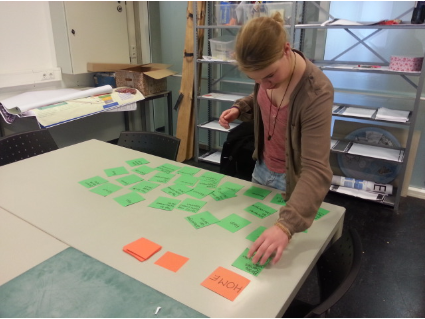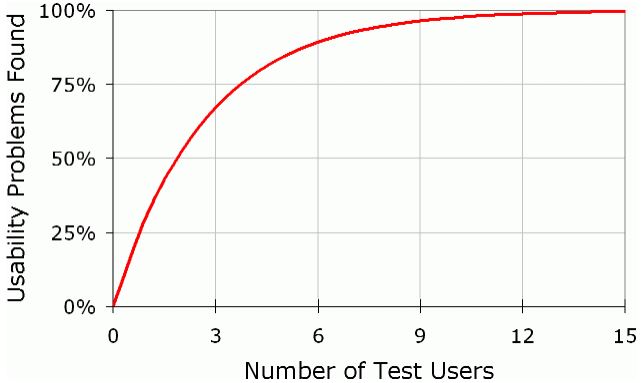Getting started with my UX research on HelloLily
Written by Birgit Timmerman on 2nd June 2015
In my previous blog post I told you about how I’d set my scope for my main project. I am going to focus on finding a way to improve the practicability and learnability of HelloLily. But how?
The last three weeks
The first step in preparing my main research was writing a research proposal. In this research proposal I described the scope of the project, the methods I plan on using, the expected results and the discussion. The discussion is meant to explain the choices I made. That is pretty much all I’ve been working on the last three weeks, since it is quite hard to figure out the right methods to answer the research questions.
The research questions
After a while, I managed to formulate the right research questions. My main research question is:
What should be changed to the CRM system HelloLily to optimize the usability?
My sub questions:
- Why does HelloLily score low on practicability and learnability according to the User Compass?
- How do users experience the Information Structure of the current version of HelloLily?
- How can the practicability of HelloLily be improved with the result of a higher score on the User Compass?
- How can the learnability of HelloLily be improved with the result of a higher score on the User Compass?
- What adjustments to HelloLily, in terms of interface and/or information architecture, provide a more practicable and learnable experience?
The research methods
To answer these questions, I am going to use several research methods:
In-depth interviews
In-depth interviewing is a qualitative research technique that involves conducting intensive individual interviews with a small number of respondents to explore their perspectives on a particular idea, in this case HelloLily. In my previous blog post I’ve told you about the User Compass research and its results. During this interview I want to understand why the users gave a low score on practicability and learnability.
Card sorting
Card sorting is a simple technique in user experience design where a group of respondents, regardless their experience with design, are guided to generate a category tree, using cards or post-it notes. It is a useful approach for designing information architectures, workflows, menu structures or navigations paths. Using this method, I intend to find out how the users of HelloLily would ‘design’ HelloLily’s content. Maybe it’s totally different from the current version.

Focus group
A focus group is a form of qualitative research in which a group of people are asked about their perceptions, opinions, beliefs and attitudes towards a product, service, idea, etc. In this case, of course, HelloLily. It’s a fun and creative way to think of new and innovative products. During the focus group, I will be the moderator, leading everyone through the session and making sure everyone gets a say.
User testing
After analyzing the results of the former methods, I will make drawings and designs of a new concept. This concept needs to be tested with the users. Of course, new usability problems will occur, so the concept has to be redesigned. After creating the new design, I need to test again. Even though the redesign should “address” the problems found in the first study, the truth is that you think that the new design overcomes the problems. But since nobody can design the perfect user interface, there is no guarantee that the new design does in fact address the problems.
According to Jakob Nielsen (March, 2000), you only need to test with five users. After the first study with five users, 85% of all usability problems are found. After creating a new design, users discover most of the remaining 15% of the original usability problems that were not found in the first round of testing. Finally, the third study will be able to probe deeper into the usability of the fundamental structure of the site, assessing issues like information architecture, task flow and match with user needs.

Observation
During User Testing, the respondent has to do several tasks with the new concept. While the respondent performs these tasks, I will observe the actual behavior and attitude of the respondent. Most of the time, people do different things than what they say or think. I will use a scheme to write down how long it takes before the respondents finish the tasks, how many errors they make, etc.
Eye tracking
User Testing will be done using a technique called eye tracking. The respondents will perform tasks with the new concept. While observing their behavior and asking them to think out loud, their eye movements will also be tracked. At the end of the study, a heat map is created. A heat map shows a lot about the user’s behavior on a web page or digital system, like HelloLily.
What’s next?
In-depth interviewing, card sorting, focus group, user testing, observation and eye-tracking are the methods I am going to use during my project. Next Tuesday I’m having a meeting with my graduation mentor from school and work to discuss my research proposal. I will get a GO, or a NO-GO. If it’s a GO, I will start on making a research planning and recruiting respondents. If it’s a NO-GO, then I have to start all over again so let’s hope for the best ;).
Thank you for reading my blog post. If you have any questions concerning my project, blog post or anything else, don’t hesitate to ask them in the comments below.




Your thoughts
No comments so far